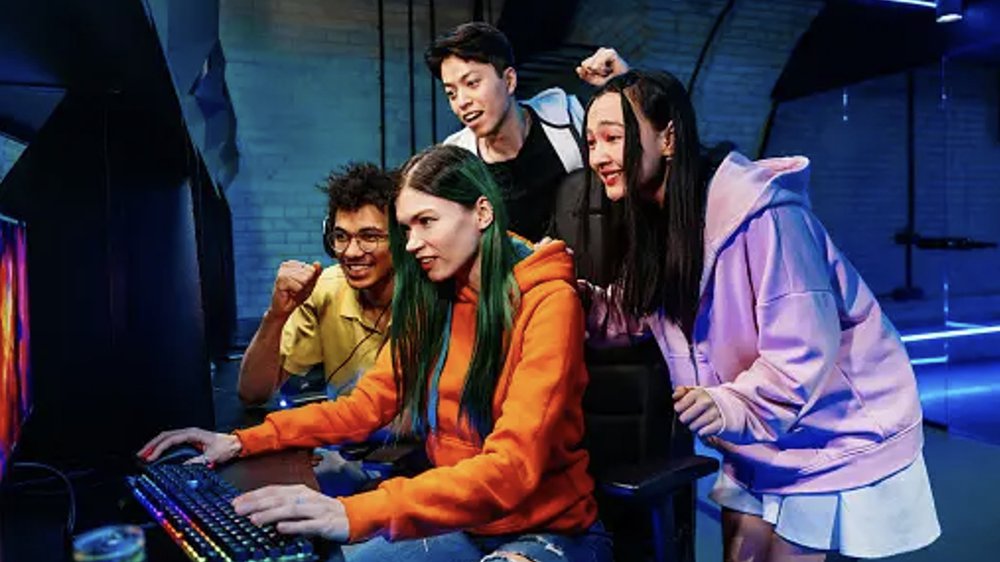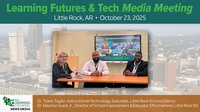Video games played in a highly-organized competitive environment known as Esports range from popular, team-oriented multiplayer online battle arenas (MOBAs) and single-player first person shooters to survival battle royales and virtual reconstructions of physical sports.
Esports continues to gain traction in the K-12 learning environment, where the games help develop teamwork and leadership; foster problem-solving skills; and provide an inclusive space for students, including those who may not necessarily excel in traditional sports.
Esports also gets more students interested in STEAM—which esports literally touches every letter of. Incorporating all five letters into curriculums isn’t easy, but video game design development—which directly correlates to esports—can help bridge those gaps in education.
Supporting College and Career Readiness
When implemented properly, an esports program can reach students in many different ways when it comes to college- and career-readiness. Students who want to go into marketing careers can make pamphlets for the teams and hand them out before their games. Potential business majors can get involved in the actual business side of their esports program and help their coaches schedule the games. Or up-and-coming sportscasters can try their hand at being an esports commentator.
Esports also reaches an entirely different demographic of students. It doesn't limit you to physical attributes or physical ability, like a traditional sport does. Instead, it gives students a place where they can go and have that same environment and same team-building structure.
On average, we're seeing around a half-a-point increase in student GPAs who participate in esports programs. As with traditional sports, we’ve set GPAs that our students must maintain in order to compete on those teams, which is a good driving factor for students who haven’t found their passion yet. It's a win-win for everyone in that sense.
6 Steps to a Great Esports Space
Right now, we're seeing a substantial increase and interest in esports in education, and with that comes new scholarship opportunities. Last year, around $25 million in scholarships were made available to esports students. This is yet another proof point of esports’ wide reach; we’re giving them a chance to go to college to get a degree and further their education and careers.
Dedicated spaces designed for esports can help schools unlock the true potential of these programs. A well-equipped space fosters a sense of seriousness about esports and camaraderie while also ensuring optimal performance during competitions and practice. Here are six steps to building the ultimate K-12 esports arena:
- Find the right physical location. We’ve seen esports labs situated in small closets, which was all that particular school could spare in terms of space. At the other end of the scale, some schools have built out large-scale arena spaces for students. It’s also not uncommon for these programs to be housed in older, outdated computer labs. These labs have been vacated due to the prevalence of 1:1 programs on campus and are often available for this type of second-generation usage. Schools don't necessarily need those labs anymore, so many times they can just take those spaces and transition them into esports spaces.
- Supply the right technology. Consider the performance technology and the power and data aspect of it. Understand that the machines used for esports will be different from the traditional machines in the classroom environment (i.e., traditional workstations). One of the key components of these PCs is the gaming or graphics processing unit through the GPU. This increased performance technology provides the ability, strength and power to handle these games and requires a lot more processing power to handle and maintain.
- Make sure you have enough data. For 10 esports stations, the recommendation is a one gigabit (1GB) circuit to run those machines in a sustainable manner, operate all of your machines and have good bandwidth traffic without issues like lag and latency. This is very important with esports programs, where a one millisecond variance could be the difference in hitting a ball, squaring it up, knocking it in the goal or missing a goal by a few inches. Your machines need adequate capacity for teams to be able to experience shared success during events.
- Create a multi-functional space. The esports environment must be both collaborative and multifunctional in nature—all without having to “recreate the wheel,” so to speak. Traditional sports spaces like football stadiums and basketball gymnasiums are all multipurpose and multifunctional. Adopt that vision when creating an esports space and you’ll wind up with a great arena that can be used in a multitude of ways. Esports is typically an extracurricular after school event, but you should also make sure that space is adequate and usable during the school day.
- Bring in specialized furniture. Esports sessions can last for hours, and proper posture is vital to prevent fatigue and potential injuries. MiEN helps schools select specialized chairs with adjustable lumbar support, armrests, and headrests to ensure comfort and help participants maintain focus during intense matches. Don’t forget to set aside space where students can get together, strategize and do game analysis. For example, you’ll often see some soft seating and tables paired up with the actual gaming equipment and used to create a very well-rounded, functional space.
- Don’t forget the AV Integration. Esports is most often played virtually, so the spectators are not always physically present. Therefore, you’ll need an AV integration in order for students to play the games and to share the game play with their fans, parents and other students. An AV integration also lets you tie any video gameplay to one or more screens, effectively creating a much better viewer environment.
Starting an esports program is a lot like building a house: you can build a small starter home, a mansion or anything in between those two extremes. It really depends on how far you want to take your esports program. In most cases it will be a multi-phase/multi-step process that involves the physical space, the technology, the furniture and the participants. The best first step is to just get started and then see where it takes you.
About the authors
Dalton Jones is the Director of esports at PowerUpEDU and Dr. Christina Counts is the VP of Education at MiEN Environments.











